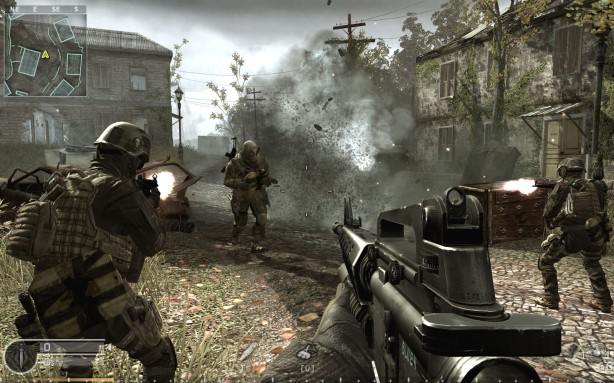Why I am not a Brahmin. A dialogue.
Q. [Krodhit svar mein:] Why is it that you think it matters that you are not a Brahmin? The Brahmins certainly are not trying to claim you! And by saying that all you do is hurt the sentiments of one, quite class stratified community? You do nothing to caste Hinduism and its many oppressions through such a meaningless declaration.
A. [Garv ke sath:] I am not a Brahmin, I will say it again, I am not a Brahmin. I am a mixed caste, hybrid, anomaly born of the desire to overthrow Brahminism in all its forms.
Q. That’s a lot of ideological posturing! What does Dalit emancipation matter to you—you who grew up so privileged in your gender conformity?
A. Unlearning caste and heterosexist privilege through caste suicide: these are some of the processes of total emancipation.
Q. Caste suicide? Kya okard loge? [What will you uproot?] The caste question is secondary to the class question, don’t you know that yet?
A. All that is solid has been okarofied. It’s the end of the world, don’t you know that yet? It’s the end of the world, don’t you know that yet? There is a civil war that has been burning, sometimes raging across centuries in different forms, and with different effects, within and against different ecologies of what Ambedkar called custom, and for the benefit of what Du Bois argued was a matter of ‘real’ revolutionary change, for the benefit of a time to come. It is a caste, racial, and class war; its domain is psychic, affective, organisational, and social reproductive.
Here’s Du Bois at the Rosenwald Conference in 1933:
[T]he matter of greatest import is that instead of our facing today a stable world, moving at a uniform rate of progress toward well-defined goals, we are facing revolution. I trust you will not be as scared by this word as you were Thursday [Du Bois was referring to the audience’s reaction to a speech by Dr. Broadus Mitchell of Johns Hopkins University]. I am not discussing a coming revolution, I am trying to impress the fact upon you that you are already in the midst of a revolution; you are already in the midst of war; that there has been no war of modern times that has taken so great a sacrifice of human life and human spirit as the extraordinary period through which we are passing today. Some people envisage revolution chiefly as a matter of blood and guns a
nd the more visible methods of force. But that, after all, is merely the temporary and outward manifestation. Real revolution is within. That comes before or after the explosion—is a matter of long suffering and deprivation, the death of courage and the bitter triumph of despair. This is the inevitable prelude to decisive and enormous change, and that is the thing that is on us now. We are not called upon then to discuss whether we want revolution or not. We have got it. Our problem is how we are coming out of it. Qtd. and annotated by Cedric Robinson, Black Marxism, pp. 234-35.
Q. What of the question of revolutionary unity?
A. No unity without solidarity and no solidarity without radical equality. All emancipatory unity is more and less than itself.

Q. That’s sheer mystification, surely…
A. First, don’t call me Shirley. [Q: Groans.] Second, to continue: Because a preindividual Solidarity is first, all revolutionary subjects mobilized through the multitude constituting a free, insurrectionary, processual democracy assembled through a non-coinciding resonant unity, sometimes a Party and sometimes just a party, an emancipatory transindividuation, or what Deleuze and Guattari called a revolutionary becoming.
[…the conversation had gone on along this way for some time. Back and forth, fort/da, thesis/antithesis, seemingly locked in an abyssal blah blah. These conversations, our frank and open discussions, they made me sick and nervous, I had to eat pickles to get through them. And drink, how much we drank ya? S/he thought: All of It revolves around the complexities of how suvarna domination and non-suvarna ecologies co-exist in locked but graded antagonisms, hatreds, degradations, violences, intersections of emancipatory and caste power, and processes of expropriation and value capture, synthesising the different kinds of debilitations necessary for caste, gender, and racial inequality to reproduce itself. But the night was wearing on. We had both had our large and small packs, there was just time for ‘one for the road…’…Captain Jack will get us through this seemingly endless night…]
Q. [Refreshed and relentless:] Why do you insist that identity and authenticity are not crucial for non-suvarna aesthetics (is there even such a thing? Its like saying subaltern culture? What is THE culture of the non-elite? Surely, its multiple, internally and always divided from itself…identity is only the minimal degree of difference–Gabriel Tarde)… and what of the potential of identity politics for radical emancipation itself and more generally? Why this obsessive focus on technology and the distinction between intellectual and manual labor in Brahmanical life? Why this naïve negation [ahem] of mediation?
A. The white boys will always berate you with mediation, just like the Brahmins for not being Indian enough. But that doesn’t mean they can’t know how resonances become. What does Dalit and feminist emancipation in India have to do with technogenesis, that is, a nonlinear co-creation of becoming between material life and social practice, volatile bodies and vibrant matter? This is especially relevant in thinking through the material history of Dalit exceptionalisation and social reproduction: tools, the making of tools, the relegation to tool use, and the exclusion from certain other tool milieus (those associated with ritual and caste purity), the extemporaneous, necessary, and virtuosic stylization of tool-use: technology has been both a poison and a certain cure in Dalit history. It is the materialist tendencies of Dalit studies today that bring out this question of emancipatory technogenesis as a radical ecologism, this critique of and ontological overcoming of the singularly oppressive formation in India of the radical separation between manual and intellectual labor. As always, the question turns on habit and the customs that naturalize and mystify it. A politics beyond mediation is heralded in and indeed practiced throughout this long history of Dalit emancipation, of Black emancipation, even the emancipation of the body. This is Aishwarya Kumar on Ambedkar:
…he frequently replaces “fraternity” [solidarity??] with maitri (“friendship” or “fellowship”) in his final writings and, in an All India Radio Broadcast in 1954, equates fraternal sharing (which included the sharing of belief ) with religion itself. But traces of this shift are already evident in Annihilation of Caste. The fearless claim for a politics without territory or ground is already present in that lecture. There is no equality, he argues, without the sharing of freedom (and vice versa), no immortality of politics without a collective respect for the immeasurable singularity of every creature’s mortality. The irrefutable truth of impermanence alone lends politics its immortal value. The moral sovereignty of democracy over all other political forms and activities (or at least, the lack of adequate alternatives that might take its place) stems only from its promise to establish the everyday, even mundane, realm of “communicated experience” as the ethical and political ground of existence. In such a realm, argues Ambedkar, the social exists “by communication, indeed in communication,” and one’s failure is considered as justly sharable with others as one’s success. In true democracy, then, the sovereignty of the self is always mediated by one’s “reverence” toward the neighbor. Any other mediation of the multitude’s action by representatives, agents, priests, philosopher-kings, or demagogues of class war, compromises the spiritual sovereignty and task of the revolutionary subject. There was something profoundly insurrectionary and anarchic in this conception of the political. For here, the political subject came into existence only through incandescent acts of force and martyrdom, through its immeasurable freedom to posit a republic unmarked by the logic of transcendence. (138)
Inspired by Ambedkar, Dalit movements in postcolonial India have questioned the preformed categories of political theory: individual and society, caste and state, force and morality. A nonlinear counter-memory of these and other emancipatory movements would develop revolutionary diagrams of the preindvidual processes constituting both categories of thought and material reality.
Q. This Western High Theory you use–it is so foreign to India. Here, don’t you see, the struggles are about 2019, and only a foriegner like you wouldn’t understand that!
A. Spoken like a true authentikit curator. I understand India by trying to invent a political philosophy that discovers as it composes. Let’s talk movement politics. The Dalit movements in the 20th century—not only under the ostensible, if rather lacklustre organizational leadership of Ambedkar—developed transversal solidarities. And transversal to this context of Dalit emancipation, the question of mediation takes on a charge different from that which it operates in Hegel’s negative dialectic. But more on Hegel another time… Let’s return to Ambedkar at Mahad, Aishwarya Kumar writes:
“I may seem hard on Manu,” [Ambedkar] concedes, “but I am sure my force is not strong enough to kill his ghost.” This affinity for force and forcing— and the invocation of ghosts and specters—is not merely semantic or rhetorical. Its sources are Shakespearean, but for that reason alone its logic cannot be seen to be any less concerned with Ambedkar’s politics and ethics than it clearly is with his literary and poetic sensibilities. Quite to the contrary, force was an irrevocable constituent of Ambedkar’s emerging ethics. In 1927, four years after his return from London, he publicly burned at a Satyagraha Conference in Mahad, a town just over a hundred miles south of Bombay, a copy of the Manusmriti. The ghost was now being exorcized by fire in classic satyagrahic fashion. “The bonfire of Manusmriti,” Ambedkar recalled, “was a very cautious and drastic step . . . taken with a view to forcing the attention of caste Hindus. If you do not knock at the door, none opens it. It is not that all parts of Manusmriti are condemnable. . . . We made a bonfire of it because we view it as symbol of injustice . . . because of its teachings we have been ground down under despicable poverty, and so we made the dash, staked all, took our lives in our hands and performed the deed.” (131)
Q: You see there is this minimal degree of mediation even here in this ‘event that exceeds Ambekdar’s own actualization’ as you might put it—mediation even if only as a kind of diffuse cultural genealogy of social action. Identity itself is always mediated by the social…
A: Identity has reality effects, it shapes what we think is possible. But it doesn’t really help us to compose with potentialities in mind. All of life’s plasticity makes it infinitely spongy, and if understood through an ethics of joy, infinitely giddy. Identity is also a habit of thought. Identity, Gabriel Tarde once said, is the minimal degree of difference. You just said that? It’s Tarde right? Yes, that same Gabriel Tarde that Ambedkar studied and wrote about. Tarde and Ambedkar: a Dalit monadology? It doesn’t matter, what matters are those hiccups in identity, when a sensory motor habituation goes caput for a moment or forever, when things break down or phase transition, that’s when identities are in flux. The tendencies, parameters of change, and capacities of identities always suggest a preindividual phase space that is better characterised as a non-coinciding resonant unity for singular and collective ontogenesis. Revolutionary ecologies of sensation.
Muriel Combes, in her brilliant study, Gilbert Simondon and the Philosophy of the Transindividual puts it in this way:
Being “does not possess unity of identity which is that of the stable state in which no transformation is possible: being possesses transductive unity” (IG, 29; IL, 31). That being is more-than-unity does not mean that there is never any unity: rather, it means that being one occurs within being, and must be understood as a relative store of the “spacing out of being,” of its capacity for dephasing. We will call this mode of unity of being, across its diverse phases and multiple individuations, transduction. This is Simon- don’s second gesture. It consists in elaborating this unique notion of transduction, which results in a specific method and ultimately in an entirely new way of envisioning the mode of relation obtaining between thought and being…. (p. 6)
Q: There is an ontotheology behind this…pure ideology as they used to say.
A: No, there is an ontogenesis in the thought of this…
Transduction is first defined as the operation whereby a domain undergoes information—in the sense that Simondon gives to this term, which we have discussed in the example of molding a brick: “By transduction, we mean a physical, biological, mental, or social operation, through which an activity propagates from point to point within a domain, while grounding this propagation in the structuration of the domain, which is operated from place to place: each region of the constituted structure serves as a principle of constitution for the next region” (IG, 30; IL, 32). The clearest image of this operation, according to Simondon, is that of the crystal that, from a very small seed, grows in all directions within its aqueous solution, wherein “each molecular layer already constituted serves as a structuring base for the layer in the process of forming” (IG, 31; IL, 33). (Coombes, Simondon, pg. 6)
In his forward to Kafka: Toward a Minor Literature, Reda Bensmaia relates this to the context of the politics of Kafka’s writing–illuminating as well for a critical consideration of the politics of something like a Dalit aesthetics: “But rather than ascending to some singular—transcendent—figure or signifier, it is a matter of defining a space, a metastable force that does not refer to a subject but designates a vection, a movement of translation that belongs to preindividual forces. These forces seem to have already been traversed by an immemorial forgetfulness that makes it impossible to reduce the saying to the said and that refers to an experience for which only a collective enunciation can take responsibility…” (xii).
With neuromarketing we see how these continuous multiplicities (preindividual fields of multiphased potentialities) are immense and immeasurable, but susceptible to control. This phase space is both aesthetic and ethical—there is no distinction between the two.
Q: [Aside: I’ve got him soliloquising, time to pour us another round…] Go on, I’m listening.
A: [Watchful, but absent minded svar mein…] This won’t do, this won’t do at all. [Withdraws his glass.] Are non-suvarna peoples freer today that in Ambekdar’s time? This is impossible to say categorically because of the vast class and gender power differences within non-suvarna communities, but there are indications across India that Brahmanical caste hierarchies are as strong today as they ever were, and worse: if seen in linked contexts with the increasing precarity, indebtedness, and extractionism of neoliberal India (Mazzadra, 2014, 2018) which exacerbated already existing hierarchies and tendencies of suvarna accumulation and corporate-focused privatization, we can say that there has been a ramification and intensification of caste prejudice and discriminatory organisational practices. If we take the question of authenticity to be central or most important—as in: are you an Authentic Dalit/Feminist/Queer/Marxist/Indian/Hindu—then the problem of solidarity must be seen as central to any articulation of an emancipatory authenticity or an authentic emancipation. No one is free unless and until we are all free. The individuation of one ecology is bound up with the emancipatory ontogenesis of many others, indeed of all others…
Q. [With a rising screech like Arnab Goswami, in prime bullying mode:] This is all well and good, but you haven’t gotten to the crux of the problem, you seem to be skirting the real issue: what is the nature of politics to you? How is a radical and effective politics possible without an insistence on mediation: we want state power, don’t we? We need a revolutionary vanguard for that, don’t you see?
A. Why do you bring in the question of mediation, its still too early in the processes we are discussing. Think of Ambedkar, within and against Gandhi’s satyagraha ethics, burning the Manu Smirti at Mahad. How did that event exceed its own actualization, what in other words did that event actually do? It brought the question of power and capacity together for millions of Dalit and non-suvarna peoples in showing the poison at the origins of custom. What power do ‘we’ want? Who is this we? Where? Which power? Why this one and not that one? What is power—the vote, a voice, freedom, but also capacity, affect, affordance, force, movement—after Ambedkar, after his elaboration throughout his works of a profoundly radical concept of political force… Force for Ambedkar and Gandhi was radically embodied; for Gandhi in the service of the simple virtues of a romanticized and mythologized Man of God –harijan—the force of truth and the force of justice came together only after his decisive encounter with Ambedkar’s political ecology. But Ambedkar was a far more complex thinker than Gandhi; he thought of power in its material gradients (the famous thesis of the gradients of Brahminical power), and practiced emancipatory power as insurgent experiments in radical equality.
Aishwarya Kumar writes movingly:
Custom is not the antithesis of positive law; it is simply that which comes before the law. It is, Ambedkar argues in Annihilation of Caste, the ontological foundation of all authority. For custom, whose ubiquity gives it the appearance of an innocuous (and even civic) restraint, is in essence a regime of injunctions in which law takes its most surreptitious, enduring, and compelling form. Custom, he argues in a classically republican vein, is violence without the police, domination without interference. Custom gives the sovereign’s wish the form of voluntary acquiescence; in truth, it is voluntary servitude maintained by the invisible threat of ostracism and (if need be) police power. In a discussion of the pernicious longevity of the Manusmriti or the “Dharma of Manu [ancient India’s most significant lawgiver],” Ambedkar thus makes a subtle distinction between custom and law, between moral norm and police power. They are, he says, heterogeneous but inseparable. “Custom is no small a thing as compared to Law. It is true that law is enforced by the state through its police power; custom, unless it is valid is not. But in practice this difference is of no consequence. Custom is enforced by people far more effectively than law is by the state. This is because the compelling force of an organized people is far greater than the compelling force of the state.” Here, “the people” (in its organized, juridical sense) is a collective that acts surreptitiously, beneath and beside the state, without a display of force. And in this seeming nonforce of the juridical domain of everyday life are hidden the most visceral, intimate, and measured operations of law over life. Custom, its unsaid obligations and injunctions (dharma), is that through which law passes into life and life becomes inseparable from the law. Ordinary ways and acts of being human are thus made to pass through a maze of punitive ordinances. Touching, the sensory and most radiant core of humanity, the source of its most mundane feelings and sympathies, its greatest gift, is circumscribed within norms of intimacy and distance, approachability and unapproachability, its ethics and humanity sequestered from the shared spaces of civic and municipal life and put under the invisible (but always threatening and compelling) watch of police power. One henceforth touches the other only in the threatening shadows of the law. In fact, writes Ambedkar in a tragic fragment of Waiting for a Visa, the “untouchable” and the Hindu are touched constantly, even (and especially) at death, albeit not by each other but by the law alone. The custom of “not touching,” the norm of keeping distance, thus becomes sovereign among all Indic injunctions, an ironic marker of Hindu etiquette and civility (sadachar), at once mystical like the law and immeasurable like suffering. No God is sovereign enough to override this injunction, no mathematics precise enough to register this catastrophe. (118)
You know of course that Ambedkar radicalized Bergson? Ontologized him in a certain (post)colonial theatre of individuation…
Q: Solipsisms and blusterings, if not outright blunderings! Ambedkar himself—don’t you know this?—he acknowledged the mystical tendencies of Bergsonian thought. But invoking Ambedkar’s colonial-modernist intellectual genealogy doesn’t get us anywhere. And don’t turn him into a postcolonial critic a la Spivak avant la lettre! At that time, everyone who was thinking was reading Bergson, getting fired by his naive vitalism—–it made it big in SoCal, in fact its apotheosis was the mysticism of the California hippies for whom intuitive self-actualisation became overconsumption. See Adam Curtis’s Century of the Self… In fact, that’s where you should turn to for the great theorist of the 20th century, not Bergson or Heidegger but Edward Bernays, nephew of Frued and the person who came up with branding. We should think about how Ambedkar and Dalit emancipation itself has become a social justice brand, competing with Modi’s Svachch Anand brand…
A: Certainly, yes. But the question of what kinds of resonances Ambedkar found and with which ones he [but already he was part multitude] was able to compose a constituent power, the complex ways that his political theology of emancipation negotiated the romantic tradition of European thought–this is what is decisive, what made a difference both in the history of India and in the development of emancipatory thought and practice. But you are right: let’s return to the problem at hand: Why am I not a Hindu, sorry a Brahman. Hinduism is India’s First Brand—see the adds for Patanjali (pure, organic, Ayurvedic) products…First…
Q: Actually, I think the question has now become….
A: …first, there is no Hinduism beyond Brahminism, that’s why Kancha Illaiah’s thesis in Why I am not a Hindu continues to have radical implications for how we understand the forces that is re-organizing caste and class exploitation in India today. Why is there no Hinduism beyond Brahminism? All the terms—euphemisms, to me—that Gandhi came up with (sometimes collectively) for Hinduism were merely ideological mystifications of the primary role of purity in Brahminism. And isn’t this critique glaringly missing in Tharoor’s Why I am a Hindu? It is this organizing tendency toward purity—linked to the one-drop rule of racial purity in the USA not by simple analogy or sameness of the material conditions of struggle, but through a radical and materialist genealogy of social purity in solidarity with both Black and Dalit emancipatory queerontogenesis.
But purity has several aspects today in caste politics and globalized consumerism that overlap and intersect. What are these aspects? Let us return to a simplified notion of purity. Purity is tied to the health of the body (yes that same body-metaphor of Manusmirti infamy). To expel and keep external ‘impurities’ or elements and tendencies that decompose the body would a practice of a kind of [narrow] ecologism. It is this seemingly ideological neutral discursive formation that is the master sign of India’s New BrahmanismTM: The Ayurveda Man.
[Long pause, deathly silence, a gap in relating wherein the impossibility of ‘full’ communication becomes awkwardly obvious. Reeling in the years of feeling foreign…]
Q. [Sighing, sipping, wearyingly:] You have missed your second point.
A: [Unperturbed, and indefatigable:] …my second point—and this may seem contradictory—is that there is no one Hinduism. Thus, Brahminism becomes a capture-extraction-enclosure regime as protean as capital…the Sufi inspired Protestant Hinduism of the Bhakti tradition so important to the subsequent development of the force of Dalit theology, expresses a broader point: from Sikhism, to Jainism, to Bhaktism, to Buddhism these movements multiply the spiritual sources of purity itself (it is immediately ruptured beyond the enclosure of Brahminical mediation) but also produce ethical diagrams for organising the material resources for protest, insurrection, revolt, and refusal, bringing a crisis of difference (in practice, in processes, in ecologies of sensation) to the purity of Brahmanism. These emancipatory mobilizations were thus in their own ways both epistemological counter-memories and ontological emancipatory practices. For Ambedkar as well, the concept-force of purity was decisive in his radical ‘historiography of force’ (Kumar’s felicitous phrase) in the development of Brahminical domination. So then no Hinduism without Brahminism, but no unified Brahminism without the proliferation of innumerable sites of difference, refusal, and revolt. See the work of Sharad Patil…
Q: And so this is why you are not a Hindu? Because Hinduism is Brahminism (invented purity) and Brahminism is a violent unity?
[It was almost dusk, an owl hooted outside, as if in waiting.]
A. [Startled, as if brought back to attention:] I’m no Minerva, but yes we could say that. Pour another shall we? I was watching an episode of Shat up ya Kunal (https://www.youtube.com/watch?v=gVWSgFyaid0&t=1227s) in which Kunal interviews an activist from JNU, Shehla Rashid, and Dalit activist and recently elected Independent MLA representing Vadgam in Gujurat, Jignesh Mevani. Rashid notes we are fighting over crumbs, but still we are fighting over 8000 seats at JNU that the state has a legal responsibility to administer as partly reserved. Having worked in the corporate sector, she sharply observes there is of course no reservations in the corporate sector. Corporates want people with a good personality, by which they mean good English speaking, non-famished bodies. Bodies of privilege. Mevani argues that we need an alternative politics, which will emerge from the people’s movement. Modi comes with karma yogi, he says that street sweepers forcibly working in the gutters get spiritual happiness [anand] from their work. [This is a paraphrase:] “Why doesn’t he come down to the gutter himself and get some spiritual happiness? Our fundamental problem is Brahminical mindset, not Brahmins. It is the caste system that is our problem. The caste system is against the very idea of merit…” This doesn’t stop Brahminical forces from claiming a kind of reservation, elsewhere; Rashid point out that the right wing VHP is stopping the movement to outlaw caste discrimination in the UK by claiming multicultural protections…The two make strong cases against the caste system, but both are wary of how always Brahminism always obscures its own privilege by claiming victimage.
The interview poses another question, obliquely, however. When Mevani says why doesn’t Modi come down in the gutter and get him some happy vibes, he precedes that by asking why doesn’t the suvarna state develop technology to ‘humanize’ this demeaning work? So the question of technogenesis and emancipatory ontogenesis in radical anti-caste and feminist politics is linked, and in complex ways. The problem will still remain crucially about the limits and possibilities of human ecologies embedded in emancipatory, but not entirely human ontogenesis across life, matter, and force. The hand, Gandhi’s fetish, became a symbol of ‘honest work’ a celebration of the virtues of simplicity and of use vale (as opposed to the artificial commodities of exchange capitalism—he takes this directly from Ruskin’s Unto this Last!)—the Hand and its intensive sensibility of touch or hapticity is also a reminder of the relegation of certain populations, non-suvarna, ‘broken peoples’ to all kinds of ‘impure’ and hereditary servitude (See Gopal Guru, Patil, Ambedkar, Omvedt), and thus the ritual performance of the caste labor of social reproduction becomes a direct means of reproducing Dalit untouchability, forever sacred and impure. In fact, it is the Dalits of India who invented both aesthetics and technogenesis, in Dalit movements the two are synthesized. Jugaad practices throughout Dalit ecologies synthesize this mixed history of technology and ethics in a non-emancipatory ontogenesis. I say non-emancipatory because there is nothing that wills a free and equal commons in jugaad practice; the will of jugaad is certainly fugitive and extra-legal, but seeking a pure dynamism of connectivity…
Q. I must stop you here…
A. Why is it getting late?












